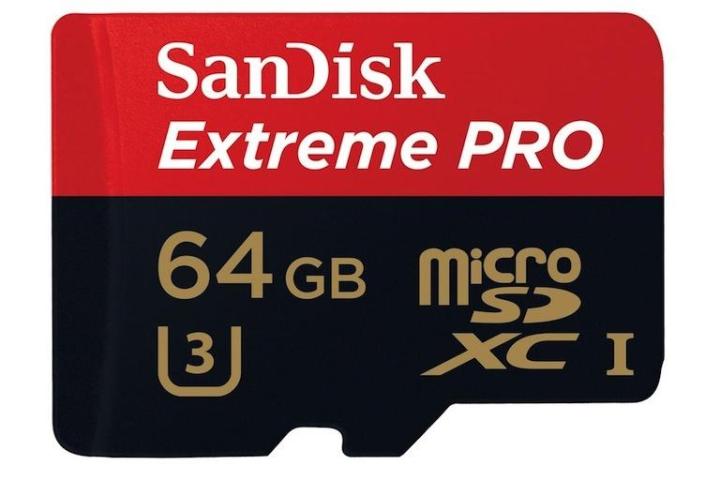
Considering the huge amounts of data that need to be written to and read from a 4K-capable device’s memory, it is recommended to use a memory card that supports the latest UHS-I standard and its high data transfer rates. SanDisk has just recently announced a new generation of Extreme Pro SDXC cards supporting transfer speeds of up to 90 MB/s, but these will do little good in smartphones, as they are too big to fit.
Related: Everything you need to know about Ultra HD 4K
Amidst the flood of new products that were announced during and around Photokina, SanDisk’s announcement of a new UHS-I Class 3 MicroSDXC card that can be used for 4K video applications somehow slipped our attention. The new Extreme Pro card with the smartphone-friendly form factor can hold a maximum of 64GB of data, and supports high transfer rates of up to 95MB per second.
SanDisk’s new UHS-I Class 3 Extreme Pro MicroSDHC/XC cards come in three versions, holding up to 16 GB, 32 GB or 64 GB of data. They’re avaialble worldwide now and range in pricing from $80 for the 16 GB card to $300 for 64GB. If you’re planning on using your smartphone to record 4K video – if it supports it, that is, and they’re still rare – getting one of these might be a good idea. You can also use them in digital cameras or other devices via an adapter.


